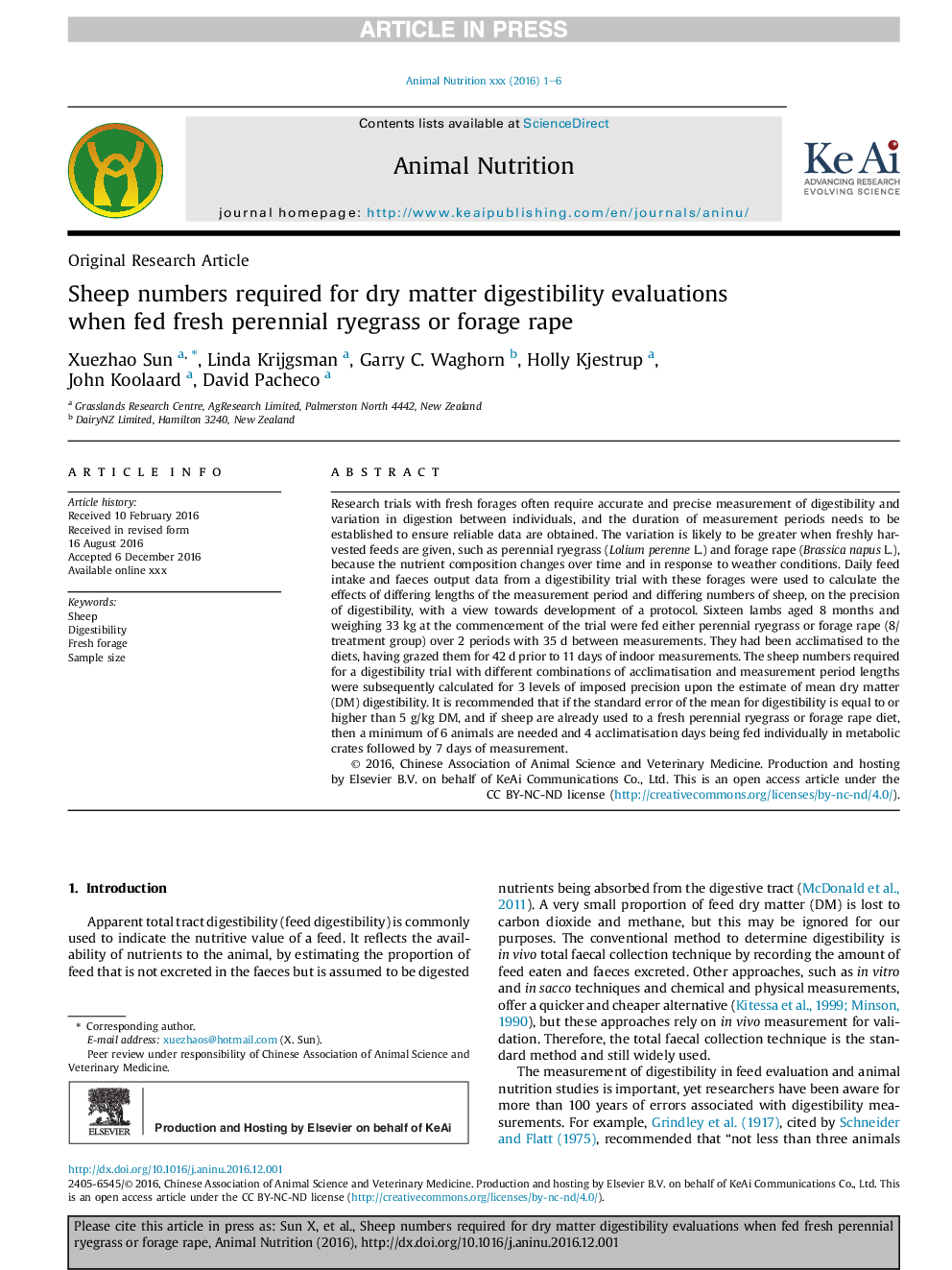| Article ID | Journal | Published Year | Pages | File Type |
|---|---|---|---|---|
| 8882616 | Animal Nutrition | 2017 | 6 Pages |
Abstract
Research trials with fresh forages often require accurate and precise measurement of digestibility and variation in digestion between individuals, and the duration of measurement periods needs to be established to ensure reliable data are obtained. The variation is likely to be greater when freshly harvested feeds are given, such as perennial ryegrass (Lolium perenne L.) and forage rape (Brassica napus L.), because the nutrient composition changes over time and in response to weather conditions. Daily feed intake and faeces output data from a digestibility trial with these forages were used to calculate the effects of differing lengths of the measurement period and differing numbers of sheep, on the precision of digestibility, with a view towards development of a protocol. Sixteen lambs aged 8 months and weighing 33Â kg at the commencement of the trial were fed either perennial ryegrass or forage rape (8/treatment group) over 2 periods with 35Â d between measurements. They had been acclimatised to the diets, having grazed them for 42Â d prior to 11 days of indoor measurements. The sheep numbers required for a digestibility trial with different combinations of acclimatisation and measurement period lengths were subsequently calculated for 3 levels of imposed precision upon the estimate of mean dry matter (DM) digestibility. It is recommended that if the standard error of the mean for digestibility is equal to or higher than 5Â g/kg DM, and if sheep are already used to a fresh perennial ryegrass or forage rape diet, then a minimum of 6 animals are needed and 4 acclimatisation days being fed individually in metabolic crates followed by 7 days of measurement.
Related Topics
Life Sciences
Agricultural and Biological Sciences
Animal Science and Zoology
Authors
Xuezhao Sun, Linda Krijgsman, Garry C. Waghorn, Holly Kjestrup, John Koolaard, David Pacheco,
